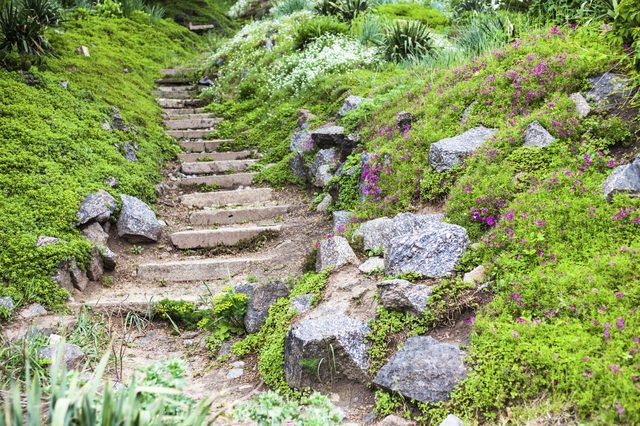Bulbs
Flower Basics
Flower Beds & Specialty Gardens
Flower Garden
Garden Furniture
Garden Gnomes
Garden Seeds
Garden Sheds
Garden Statues
Garden Tools & Supplies
Gardening Basics
Green & Organic
Groundcovers & Vines
Growing Annuals
Growing Basil
Growing Beans
Growing Berries
Growing Blueberries
Growing Cactus
Growing Corn
Growing Cotton
Growing Edibles
Growing Flowers
Growing Garlic
Growing Grapes
Growing Grass
Growing Herbs
Growing Jasmine
Growing Mint
Growing Mushrooms
Orchids
Growing Peanuts
Growing Perennials
Growing Plants
Growing Rosemary
Growing Roses
Growing Strawberries
Growing Sunflowers
Growing Thyme
Growing Tomatoes
Growing Tulips
Growing Vegetables
Herb Basics
Herb Garden
Indoor Growing
Landscaping Basics
Landscaping Patios
Landscaping Plants
Landscaping Shrubs
Landscaping Trees
Landscaping Walks & Pathways
Lawn Basics
Lawn Maintenance
Lawn Mowers
Lawn Ornaments
Lawn Planting
Lawn Tools
Outdoor Growing
Overall Landscape Planning
Pests, Weeds & Problems
Plant Basics
Rock Garden
Rose Garden
Shrubs
Soil
Specialty Gardens
Trees
Vegetable Garden
Yard Maintenance
How to Plant a Rock Garden
Plant a rock garden with a range of compact, slow-growing plants. Place the plants in soil in gaps and crevices between rocks.
Plants are the crowning glory of a rock garden, and it's worth taking time to plan out your design and take care when planting so you can achieve the best possible results. A rock garden should look like a natural part of the landscape, and selecting the right plants and using garden design tricks can help provide that effect. Smart plant choices and mulching also reduce the amount of maintenance work a rock garden needs.

Selecting Plants
In a well-designed rock garden, the plants look dwarfed by the rocks and appear to be growing where nature put them. Select native plants and compact varieties of shrubs, perennials and bulbs, and avoid plants that grow taller than the rocks in the garden. Include plants that provide blooms, interesting leaves, fruit, seeds or other decorative features at different times of year.
Evergreen shrubs offer year-round color and structure in a rock garden, but deciduous shrubs can feature leaves in vivid fall shades, so include one or more of each, depending on the size of the garden.
Perennial plants often die down over winter, especially in colder U.S. Department of Agriculture plant hardiness zones, leaving the soil bare, but some early-blooming spring bulbs offer shoots from winter onward.
Young, small plants often establish more quickly than older, larger specimens, but the rock garden can look bare while the plants grow to their final dimensions. Grow annual plants to fill in the gaps for the first two or three years.
Warning
Don't grow vigorous, spreading ground cover plants in a rock garden. These cover the garden quickly but may swamp smaller, less vigorous plants, and they're difficult to control.
Creating Your Design
Create an effective, natural design for a rock garden by carefully considering the number of plants and where they're planted, and use your imagination. In the wild, plants grow in groups of the same type, so place several specimens of the same plant in clumps or drifts in your garden. Groups of uneven numbers, such as three or five, look more natural than even-numbered groups. Place some plants deep into pockets or gaps, and some under rocks.
Tip
Grow plants that need more than average moisture in the deeper crevices where soil is protected from sun and moisture loss.
Place the plants in their pots where you intend them to grow, and step back from your planting scheme. Look at the garden from all angles, but especially the angle from which it will be most often viewed. Take your time and consider the design, imagining the plants growing in the rock garden a year or more from now.
Planting a Rock Garden
Plant a rock garden three or four weeks after it was built to allow time for the soil to settle. If the weather stays dry during that time, spray the garden with a garden hose fitted with a soft spray attachment until the soil is soaked and wait a week before planting. On a sloped site, start at the top of the rock garden and work downward to avoid stepping on plants.
Things You'll Need
Trowel
Watering can
Mulch, such as pine bark or fine gravel
Garden hose and soft spray attachment
Step 1
Dig a hole the size of a plant's root ball, if space allows. In a rock garden, you may have to squeeze plant root balls slightly to fit them into gaps and crevices, but the plant should recover and grow its roots to fill the available soil.
Step 2
Put the plant in the hole at its original growing depth, and fill in the gaps with dug soil.
Step 3
Water the plant with clean water from a watering can until the soil is soaked to the bottom of the gap or crevice.
Step 4
Spread a 1-inch layer of pine bark or 1/2-inch layer of fine gravel over the soil around the plant, but don't pile the mulch against its stem.
Step 5
Plant the other rock garden plants in the same way down to the bottom of the garden.
Step 6
Water the rock garden with a garden hose fitted with a soft spray attachment when the soil surface beneath the mulch is dry. Apply enough water to moisten the soil to the depth of the plant's root balls.